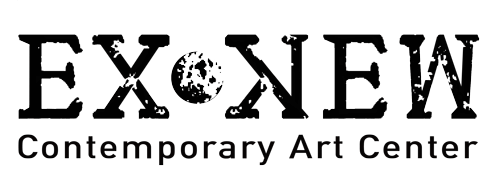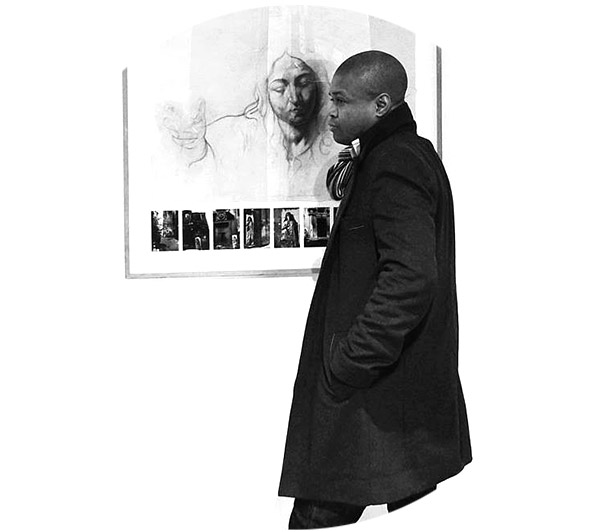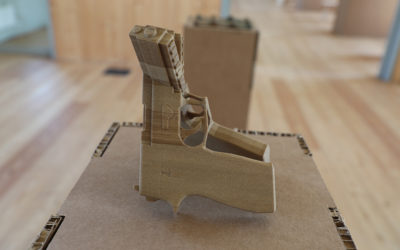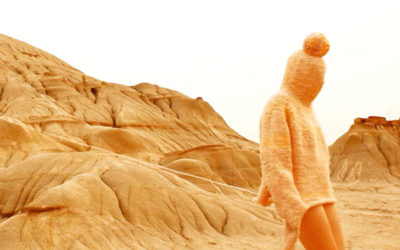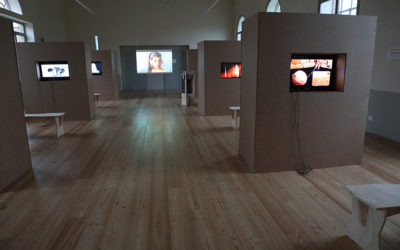Kisito Assangni
Exclusive interview
with KISITO ASSANGNI
TIME IS LOVE screening, an itinerant and serial exhibition, was born in 2008 in Paris and since then has been branching out into different international exhibition spaces, demonstrating a tenacious determination to exist. The concept, which we like very much, is simple and reminds us of the principle of a franchised shop in a virtuous way. TIME IS LOVE screening, through its creator Kisito Assangni, tenders its selection of videos and of course the title to independent cultural partners. No limits and almost total freedom for the exhibition spaces, little emphasis on the critical text of presentation, but an important list of places of art and artists who have, with availability and temporary transport, accompanied the project. We interviewed the creator of the project and tried to provoke him about the concept that, in our opinion, is the true innovative fulcrum of the whole project.
TIME is Love Screening was born in 2008 at “Octobre Galerie” (Paris) to present critical video art that foments dissension in a way to make visible what the dominant consensus tends to obliterate. The traveling event in itself strives to evaluate the work of artists, as part of total and global phenomenon that is now the contemporary art, inviting the public to join it, to be reflected in it, and with it to think about the time and how it leads to the production of these video works.
What are its specific features at concept level?
The project aims to offer spectators a selection of video works through which they can examine various artistic approaches and discover both the contrasts stemming from differences in cultural context as well as the common features due to the increasing globalization of the art world. TIME is Love Screening explores forms of artistic expression rising from society and the new media’s use of technology. It focuses on active artists worldwide and with its comprehensive body of work, the project offers a broader overview for the aesthetical and conceptual possibilities of video art.
How is the project funded?
The event is funded by institutions, galleries or festivals hosting it and co-produced by me.
Can you explain the choice of title?
Why Time is Love? The conviction that “Time is Money” has won global assent on an ever-expanding basis for more than 250 years now. Contrary to this capitalist approach, “Time is Love” for me. Being in connection with the Other is not an easy thing in present times. Love is a universal theme, within the reach of each.
You state that the exhibition is animated by the will to present “love in these difficult times”. Do you think that we are living through a difficult time?
Of course! We live in hard times due to a fold of the individualities, a fainted solidarity and a blatant indifference for the Other.
Do you think that art is experiencing a difficult period? And in particular video art?
I don’t think it’s the same. The idea of crisis in contemporary art arises from the renewal of the artistic creation, which irrevocably pulls a total questioning of the esthetic criteria. Contextual aspects of video perhaps become foregrounded as much by default as by design, due to the medium’s material equivocity.Video’s ontology lacks the essentialism of film, whose materiality is held to ‘authenticate’ some notion of truth. This non-essentialism makes video an appropriate vehicle for the determination of contingent truth within a political landscape now denuded of fixed ideological landmarks.
What have been the criteria used in selecting the artists? How did you discover them?
Most of the artists are selected via an ongoing call on our website. Additionally, the program features works by guest artists.
Why did you choose the video? Is it a choice influenced by the specificity of an exhibition, itinerant and serial, or is it a medium that has always interested you?
The choice of video as medium for this project, simply because it’s currently the more flexible medium. French critic and writer Raymond Bellour in his book “Le corps du cinema” published in 2009 has eloquently argued that video is time and again, perhaps the medium that has been most responsible for the proliferation of complex “in between” images between the various camera-based art forms-cinema, video, photography and television. Today, video is an essential feature of the contemporary art world. Nevertheless, there remains a substantial propensity amongst the younger generation of visual artists working in installation, photo media, to reinvent the wheel as far as video is concerned.
Regarding the way videos are presented. What is your role? Do you provide precise rules to the directors of the different art spaces or is each one free to choose his own exhibition mode?
The decision to project the works in a theatrical setting or to show it looped on flat-screen monitors in a gallery/museum is always tied to a range of variables, including the exhibition space and design, playback equipment and available display devices. Moreover, as curator I always discuss with the venues regarding the definitive setup even if they already have an idea.
The one we are presenting at Ex-New is the eleventh edition of TIME IS LOVE screening and for ten years now you’ve been developing this project: what has changed since the beginning and what is the peculiarity of this last edition?
The particularity of each edition lies in the fact that some exciting emerging artists join the project with outstanding pieces.
What is the video, if there is one, that best represents the spirit of this edition and for what reason?
I’m not able to choose one video. Most of the pieces represent the spirit of this 11th edition.
A video that in my opinion summarizes the main themes of this exhibition is “Spell” by your compatriot Kokou Ekouagou. On the one hand, it expresses love for one’s origins and for one’s own land with its traditions; on the other, it expresses the idea of love as a search for one’s own identity and as an irrational and uncontrollable force. Even at a formal level, the amateur appearance exhibited expresses the artist’s desire to go to the essential, without special effects or large technical equipment, looking in the public for a interlocutor with whom to share emotions. This interpretation can also be extended to the works of the other artists in the exhibition. Do you agree with this interpretation?
I agree with you. Even if the technology offers a recipe for illustrating an idea and points its possibilities to collage and experiment, the simplicity finds new ways of liberated artistic expression.
How did you get in touch with Ex-New? Sulbiate is a small town on the extreme suburbs of the city of Milan, decentralized with regard to the cultural movements that perhaps only a large city can generate. Did you find this thing stimulating or did this aspect not have any influence on the choice of proposing “Time is Love” in this art space?
I found very randomly EX-NEW towards my research. I think it can be a challenge to show TIME is Love Screening here.
We would like to have your opinion on the concept of context: do you think that “hic et nunc” (now and here) can still make sense for an itinerant and serial exhibition like this one? Are you interested in the unpredictable architecture of the host location that you have never seen before? Are these aspects that you took into account when you created “Time is love”?
The “Here and Now” concept makes no sense for this touring show. Ethically, architectural and structural configurations of the venue have no effect as far as the project is very flexible.
In the realization of an event, curators are often challenged by limits: budget, time, resources, infrastructure…What obstacles did you face in preparing “Time is love”? Do you not think that the limit, divested of its negative connotation, can turn into a generator of thought?
At the beginning, the major difficulty faced was to find interesting galleries and institutions. Then of course, we unquestionably need budget and lot of time. Anyway, without resources nowadays, it’s quite hard to do a serious project.
What are your future plans?
Keep going even if I don’t know where I’m going. Many Thanks!
His projects have been shown internationally, including the ZKM Museum, Karlsruhe (Germany); Whitechapel Gallery, London; Malmo Konsthall,Sweden; Centre of Contemporary Art, Glasgow; Museum of Contemporary Art, Sydney; National Centre for Contemporary Arts, Moscow; Es Baluard Museum, Palma, Spain; Torrance Art Museum, Los Angeles; National Museum of Contemporary Art, Seoul among others.
He has participated in symposia, talks and events at numerous international universities and festivals
Kisito is the founder/curator of Time is Love Screening and [SFIP] project – Still Fighting Ignorance & Intellectual Perfidy (Platform for critical thinking, researching and presenting Video art from Africa).
She has worked with galeries (Home, London), art centres (Théatre Nouveau Théâtre, Bordeaux, museums (Musée d’art, Sion) as a guide, mediator and scientific assistant. Bilingual French and Italian has worked as interpreter for literary events and artistic exhibitions. Specialist in contemporary art, for ten years she has taught art history in high schools and art institutes and has organized workshops in contemporary art initiation for children and adults in Geneva.
